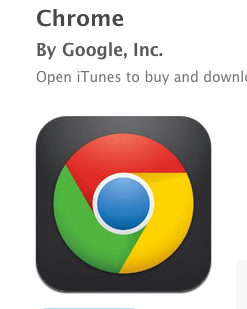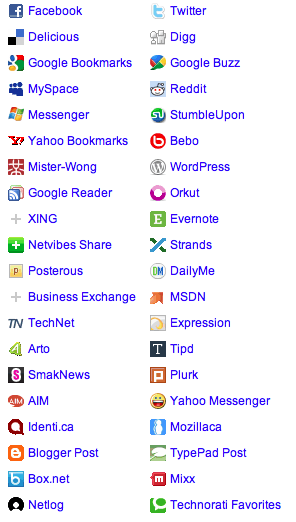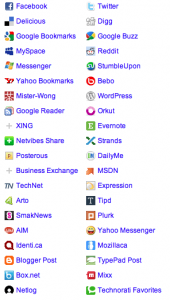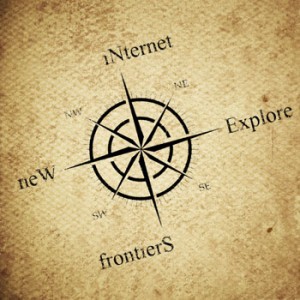 I love people. I love how the internet has enabled us to connect to people in ways we could not imagine 20 years ago. I love the people I have become friends with through the internet, through social networks and through internet conferences. I am enthusiastic about startups. I enjoy seeing people follow their dreams and building startups that make a difference in the world. However, there is a problem. More and more, I meet people who want to get into the internet world to make quick money. They are internet specialists, social media experts or they start a quick startup with the sole purpose of becoming an overnight billionaire after an Instagram-style exit.
I love people. I love how the internet has enabled us to connect to people in ways we could not imagine 20 years ago. I love the people I have become friends with through the internet, through social networks and through internet conferences. I am enthusiastic about startups. I enjoy seeing people follow their dreams and building startups that make a difference in the world. However, there is a problem. More and more, I meet people who want to get into the internet world to make quick money. They are internet specialists, social media experts or they start a quick startup with the sole purpose of becoming an overnight billionaire after an Instagram-style exit.
What are the posters you had on your wall when you were a kid? What were your dreams about? It seems to me that we are bringing up a new generation on a money-infused diet of social network founders, rock stars and television personalities. With a purpose of making as much money as quickly as you can, to then be able to do whatever you want. And to be honest, that is bad news for the world we live in. After all, the internet is not a problem that we need to solve.
What we do need to solve are problems on a much bigger scale. Things like feeding more and more people in a much better way. Finding solutions for society to live as comfortably while using fewer resources. Lifting worldwide healthcare to a very high standard, while bringing down its cost. Bringing pollution levels down and addressing worldwide environmental issues. That is what will allow us to breathe, eat and sleep every day.
To achieve that, we need people with a vision for all kinds of engineering. People that can ignore the boxes that we have been in and start fresh. Personally, I feel that we need to inspire our younger generations not just to code. We need to inspire them to explore the marvels that engineering can offer them. Not to fit into the major engineering firms of the world, but to start anew. To build new companies that do things that we thought were impossible before. Things that solve problems.
I have always loved cars and speed. Which means that I have also always loved Land Speed Racing. No, land speed racing will not solve the problems in the world. But a poster of the technology behind a land speed racer on the wall of a child, might urge them into engineering and then trigger them to move on to the greater problems of the world. I used to have a plot of the Space Shuttle on my wall. And chassis drawings of desert machinery. Just because I was awestruck by the design and engineering that went into them.
There are new pioneers in this world that are there to inspire others with their engineering projects. About a year ago, I wrote about Solar Impulse. The plane that has now been around the world in various legs. I loved how Bertrand Piccard told me that it is not about the plane, it is about starting a movement and inspiring people to think beyond current conventions. Watch the interview here.
Yesterday, when catching up with land speed racing efforts, I came across Bloodhound SSC. And I agree with what Richard Noble is saying in a video of Bloodhound SSC, his latest attempt of breaking the land speed record and lifting it to 1000Mph. It is not there as a personal toy, it is there to inspire others.
Thanks Bertrand and Richard. I’ll be thinking about what I can do. And you?


 Apparently it is here. The summer of 2012. Not that the weather seems to have taken notice, but I refuse to have that spoil my summer. I thought I would leave a couple of lines here as it has been quiet on my blog lately. Not because I do not have things to write about, or because I am taking it easy. On the contrary, it has been busier than the last couple of months. I have been mentoring startups, having had great conversations with two startups at
Apparently it is here. The summer of 2012. Not that the weather seems to have taken notice, but I refuse to have that spoil my summer. I thought I would leave a couple of lines here as it has been quiet on my blog lately. Not because I do not have things to write about, or because I am taking it easy. On the contrary, it has been busier than the last couple of months. I have been mentoring startups, having had great conversations with two startups at 
 To be honest,
To be honest, 
 Yes, I watched (part of) the Google I/O keynote today. And I loved it. There are reasons why I have an Android phone, and Google I/O is one of those reasons. I have to be careful not to write yet another Google versus Apple piece, but lets face it, there is something about Google.
Yes, I watched (part of) the Google I/O keynote today. And I loved it. There are reasons why I have an Android phone, and Google I/O is one of those reasons. I have to be careful not to write yet another Google versus Apple piece, but lets face it, there is something about Google.




 I talk to a lot of startups about various subjects. I like those talks. Most startup owners are passionate about their ideas. They all believe theirs is the best idea in the world. And they all go for world domination. Unfortunately, many of them are living in a dream world. A world where everyone flocks to their app, service or product. Just because it is so incredibly brilliant. But lets face it, it rarely works like that.
I talk to a lot of startups about various subjects. I like those talks. Most startup owners are passionate about their ideas. They all believe theirs is the best idea in the world. And they all go for world domination. Unfortunately, many of them are living in a dream world. A world where everyone flocks to their app, service or product. Just because it is so incredibly brilliant. But lets face it, it rarely works like that.
 As I returned to IRC today for the first time in at least six years, it struck me. Back in 1994 I was on a unix terminal and I used the internet for at least six to eight hours a day. My phone bills were astronomical. But everything was new. Everything was exciting. The internet, though in black and white and text only in Lynx, was this huge new universe that spanned the earth and had an unsaturable urge to grow into all possible directions. Back in 1995 I blagged my way into one of the Netherlands biggest mail order furniture retailers and sat across their marketing director explaining him why they needed to take their business online. Needless to say that he thought I was a lunatic and that people would never buy their couch online. They went bankrupt last year.
As I returned to IRC today for the first time in at least six years, it struck me. Back in 1994 I was on a unix terminal and I used the internet for at least six to eight hours a day. My phone bills were astronomical. But everything was new. Everything was exciting. The internet, though in black and white and text only in Lynx, was this huge new universe that spanned the earth and had an unsaturable urge to grow into all possible directions. Back in 1995 I blagged my way into one of the Netherlands biggest mail order furniture retailers and sat across their marketing director explaining him why they needed to take their business online. Needless to say that he thought I was a lunatic and that people would never buy their couch online. They went bankrupt last year.
 Amazing. It used to be that the motto for the Olympics was: “Participating is more important than winning”. But now that all seems to be changed. An article on photography website
Amazing. It used to be that the motto for the Olympics was: “Participating is more important than winning”. But now that all seems to be changed. An article on photography website 
 I love the future. I have loved it ever since I started reading. Technology is shaping our future fast. Back in 1985 I wrote my first computer program. Back in 1994 I launched my first website and I have been working with organizations on integrating new technology ever since.
I love the future. I have loved it ever since I started reading. Technology is shaping our future fast. Back in 1985 I wrote my first computer program. Back in 1994 I launched my first website and I have been working with organizations on integrating new technology ever since.